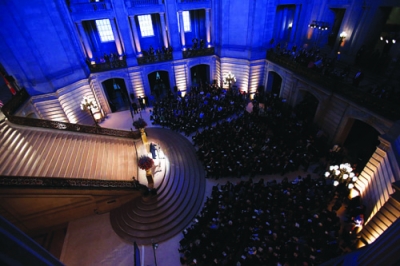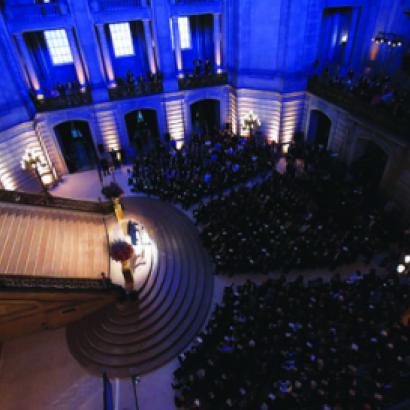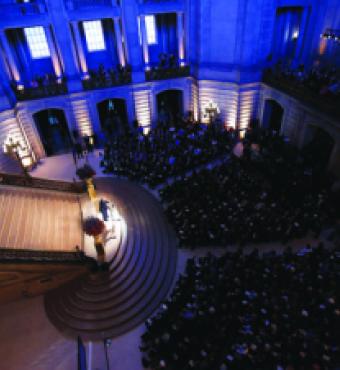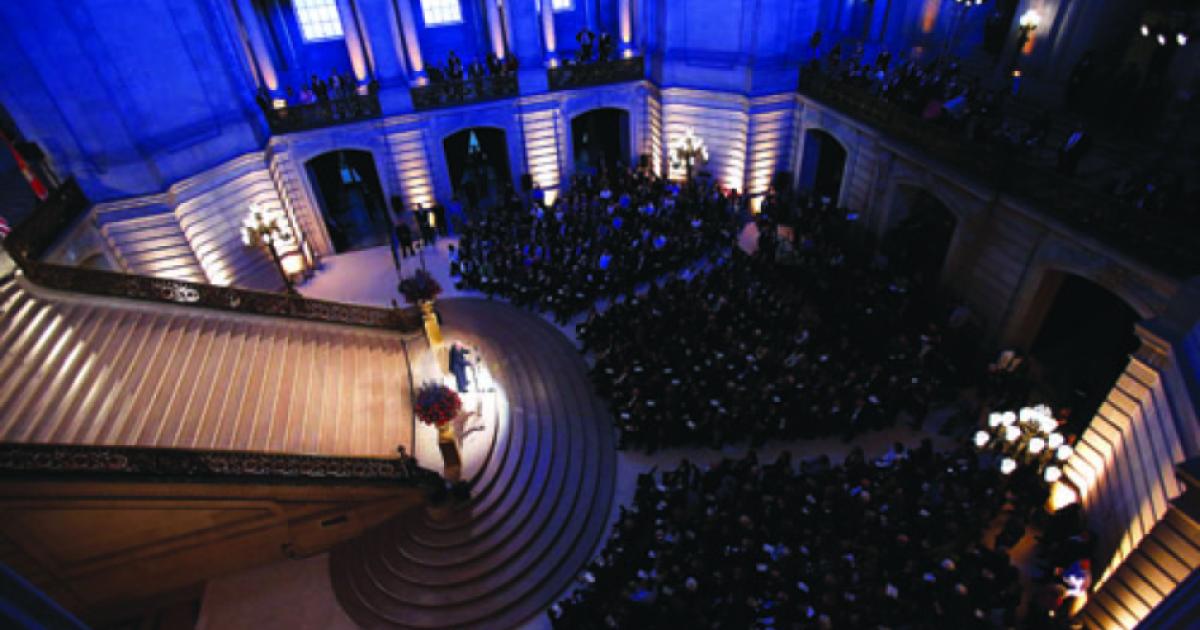- Security & Defense
- Terrorism
- International Affairs
- US Foreign Policy
Episodes of intolerance in recent months—the murder of the U.S. ambassador to Libya along with three of his colleagues, a fresh wave of riots and attacks on American embassies and schools throughout the Islamic world, supposedly triggered by an insulting movie—suggest that the so-called Arab spring is in disarray.
These unnerving events should come as no surprise. The dangers of fundamentalism were detailed in 1995, when religious scholars Martin Marty and R. Scott Appleby completed their eight-year Fundamentalism Project for the American Academy of Arts and Sciences, which extensively charted the rise of conservative religious movements around the world.
They warned of the serious dangers that fundamentalism posed to democratic institutions everywhere. Fundamentalist movements, they argued, are marked by a strong set of interlocking hierarchical arrangements in which power rests with a single person or group that wields absolute authority over a subject population. In one manifestation, husbands can dominate their wives and children; in another, religious observers must unquestioningly follow a complex set of rules, which prevents their exposure to outside intellectual and social influences that might temper their views.
Fundamentalism is often viewed in religious and moral terms. But it is equally instructive to think in terms of political economy, which makes the contrast between fundamentalism and Western democracy all the more vivid. Fundamentalists believe that “the chosen” are entitled, as if by divine writ, to exercise monopoly power to impose their beliefs. Democracies thrive on the rival worldview: competition between different groups best allows all individuals to decide how to optimally live and organize their lives.
One of the most famous articulations of that second view comes from John Stuart Mill in his 1859 book On Liberty:
At the root, this principle stands for the proposition that each individual may act as he pleases, so long as he does not infringe upon the like liberties of other individuals to do the same. But what is the definition of harm under the harm principle? Mill does not give a good explanation. Indeed, he makes a dangerous concession to the misguided principle of “social authority” that holds that
Tragically, this rule undermines the force of Mill’s original proposition by allowing “society” to form its own opinion of what activities should be regarded as “prejudicial” to others, which in turn allows the notion of harm to grow far beyond its original limited contours. The definition becomes so broad that it swallows the rule. Mill needed to narrow harm down to such activities that contravene the libertarian prohibitions of force and fraud.

George Shultz, the Thomas W. and Susan B. Ford Senior Fellow at Hoover, speaks during a public memorial service in the rotunda of San Francisco City Hall for Ambassador Christopher Stevens, who was slain during a terrorist attack in Libya.
A moment’s reflection helps demarcate the limits of this harm principle. The principle does not refer to harm caused by general social, economic, and political forces. At its core, it refers to physical force applied by one person to another. The principle must be extended to cover threats of force; otherwise, nothing could be done to combat the robber who gives his victim the choice between his money or his life, where threatening the latter becomes a way to obtain the former. Nor can it be construed so narrowly that it excludes, for instance, snares and traps triggered by the victims themselves.
The concern with fraud, for its part, must also take into account actions of concealment and the refusal to disclose information to people with whom one stands in a position of trust. It must embrace defamation, that is, false statements of fact that cause people to lose business and social associations.
The fine points in dealing with the definition of harm must not, however, be allowed to obscure this key principle: it is not an actionable harm for individuals to do what they want with their own property no matter how great an offense it gives other individuals.
The stress on the word actionable is intended to call attention to the single most important feature of the term harm. There are lots of harms we all experience as genuine losses of happiness and utility that nonetheless lie outside the legal protection of the harm principle. Unless this critical qualification is both made and defended, the harm principle can, by degrees, turn into the greatest tool for oppression on the face of the planet.
Burning quranS and FlagS
Virtually all the anti-American tumult of recent months sprang from legitimate objections to the burning of a Quran and to the making of a low-quality film that was highly critical of Islam.
But the question is not whether the grievance is legitimate. Rather, what remedy should be available to those who harbor it? Howls of protest are certainly appropriate as long as they do not involve the use or threat of force. But there it ends. It is never acceptable to use force against those who cause the grievance, let alone other innocent individuals from the same country who are pronounced vicariously guilty for the misdeeds of others. Stated otherwise, the mere offense taken by one group of individuals against the actions of another never offers a social justification for shutting down that activity.
This issue arose in vivid form in the United States with the flag-burning episodes of the 1980s, which led to the 1989 decision Texas v. Johnson. In that ruling the U.S. Supreme Court threw out the one-year jail sentence and $2,000 fine imposed on Gregory Lee Johnson for burning a flag in front of the Dallas City Hall to voice his protest against the policies of the Reagan administration.
To most Americans, the flag is not just a piece of cloth, but a powerful symbol of the values and achievements of a nation. For some patriotic Americans, it may take an enormous amount of self-restraint not to transform their inflamed emotions against the flag-burner into private violence. Mere offense, however intense or legitimate, does not justify the use of private force or criminal sanctions. Unless that line is clearly drawn, what is left to stop people from taking the law into their own hands by using force against those whose actions offend their core beliefs?
A broad definition of harm gives every group license to wield criminal law or private force against individuals whose beliefs and practices they find abhorrent. John Locke picked the right word, toleration, in his famous 1689 A Letter Concerning Toleration. It takes no courage to allow the expression of views that echo one’s own, but it takes a good deal of it to tolerate the propagation of ideas that challenge one’s own deepest ideals.
The case for toleration thus rests on the view that competitive harms should not be actionable in a liberal society. A world in which each person can practice his own religious beliefs free from the control of others, with both sides knowing they could lose members to the other, leaves everyone better off. Such a world involves a level of generality and reciprocity never found in fundamentalist sects, which are so confident about the soundness of their own beliefs that they are prepared to use force to suppress those who oppose them.
Live and Let Live
Our account of the harm principle has to be narrowed, in ways Mill was not prepared to do, to make sure the views of “society” do not allow a majority to trample the religious convictions of a minority when it has the power to do so.
We each gain more from the ability to practice our own beliefs than we do from the ability to suppress those we hate. This does not mean anything goes in the expression of religious beliefs. The same harm principle that limits the use of force and fraud by ordinary people also limits religious individuals and groups.
This live-and-let-live principle presupposes parity between religions, where no religion gets added advantage in the public space by virtue of the supposed truth of its teachings. Toleration gains its strength from the fact that it does not require the people who put it into play to accept the soundness of all, or indeed any, of the religious beliefs in question. But therein lies its beauty, for it creates a climate in which respect for the boundaries of person and property offers the one best hope for all people to live together.
In foreign relations, we must defend our vision of a just society with confidence and vigor in the face of the Islamist threat. Religious intolerance is inconsistent with democratic pluralism. So long as we have pride in our own institutions, we should never stray from our fundamental proposition of a sound political and international order.
















